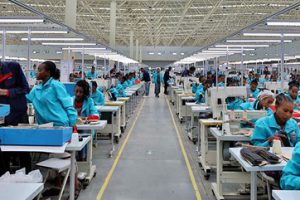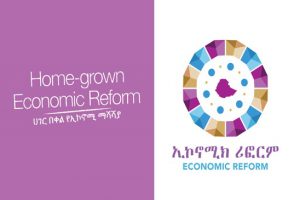
Historically, irrigation has been the most crucial input when it comes to increasing agricultural productivity. Given that agriculture plays crucial role in the process of economic development of Ethiopia, it makes irrigation very essential topic for the country.
According to various reports and studies, “if successful, irrigation in Ethiopia could represent a cornerstone of the agricultural development of the country, contributing up to 140 billion Birr to the economy and potentially moving up to 6 million households into food security.”
So, the upside of investing in irrigation for Ethiopia is significantly huge. And in line with this understanding, the country has given enough focus and made irrigation a focal point in its agricultural transformation agenda. Ethiopia’s farming system is rain dependent, despite the country’s immense potential for irrigated agriculture, said Chimdo Anchala (PhD), Senior Director of Production and Productivity at Agricultural Transformation Agency (ATA).
Various studies show that Ethiopia has 11.1 million hectare land that can be irrigated through either shallow ground or surface water. “Unfortunately, we have only used two percent of this enormous potential”. The Director indicates that some variables are making irrigation crucial. Rain is lessening, and it is becoming complex and unmanageable. So, as to him, these factors and variables are causing a shift to use irrigated agriculture since the country has the potential for that.
titution when it comes to transforming the agriculture, Agriculture Transformation Agency (ATA) has prioritized intervention in terms of tapping into the country’s huge irrigation potential. This includes providing accurate information, and identifying and promoting water saving technologies to farmers.
The plan under GTP II is to irrigate 3.6 million hectare, but the irrigated land so far has not exceeded from two million hectare. “What we learn from is that how we can reorganize ourselves in such a way that we can fully use the potential (of the country) for irrigation.” THE IMPORTANCE OF MAPPING To this end, ATA alongside other relevant stakeholders like Ministry of Agriculture, Ethiopian Geological Survey, AAU, Minister of Water, Irrigation and Electricity (MoWIE) is making different attempts, said Chimdo.
One of the collaboration is atlas mapping of the country’s groundwater; to see what kind of potential the country has within 30 meters below the surface. “So far we have mapped the groundwater of five states, namely Tigray, Amhara, Oromia, SNNP and Beninshangul Gumuz. According to him, 124 woredas are already mapped for shallow groundwater with plan to cover 200 thousand km square nationwide. “To date, more than 168 thousand km square is mapped in the aforementioned states, while the mapping for the remaining land is progressing well.”
As to him, the mapping of 2.8 million hectare land is defined, while 18.3 billion metric cube of water is found to be available. “This is huge”. It is believed that there is close to 136 cubic meter of water in general in Ethiopia, while more than 95 percent of the water qualifies for irrigation and livestock drinking. “Since our people do not accept irrigation water, if their livestock do not drink it, it is great that most of the water can be used for both aspects.” Through this process, 68 SGW atlases are produced, and one and half million household farmers have been identified.
“For instance, if you multiply each household with four or five people, it means more than 6 million people can be fully engaged through irrigation. We see that there is good potential in this; so, we need to scale-up.” THE TRANSFORMATIVE APPROACH The past trend around the world was to focus and invest on largescale irrigation, when it comes to irrigation. But, current trend is shifting towards smaller scale irrigation as it has higher return on investment than its counterpart. And ATA believes that household irrigation has a transformative potential for smallholder farmers. The thinking behind this is that independent water source in smallholder farmers’ backyard means an opportunity for farmers to produce at least twice a year, he explained.
“It also provides an opportunity to ensure food security and improved nutrition status at household level.” Also, Chimdo further opined, besides creating jobs [for many youths and women groups], the approach will encourage the youth groups organized in woreda to engage in service provision; for instance, in well drilling, engine pumps maintenance and manual pump manufacturers locally.
The Director laments on the potential benefits and implication of the household irrigation approach. “If everyone has independent water system at their backyard farming system, the likelihood of producing twice or thrice a year is much higher. This will surely enable us to attain food security.”
THE WAY FORWARD
Chimdo believes that some of the issues facing irrigation development in Ethiopia in regards to developing irrigation infrastructure, policy and institutional issues/challenges, research and extension related issues, and in terms of improving technical skills and institutional capacities needed to be tackled, if the country is to setup an irrigation system that is backed by value chain activities, market accessibility and services. Moving forward, he suggests that in addition to strengthening government policies and institutions to effectively transform the irrigation subsector, expanding demand-driven research on irrigation and drainage technologies, among other things. “Also, he sees that increasing awareness of the farmers on irrigation, and expanding the availability and affordability of irrigation technologies and services as important moving forward.
The Ethiopian Herald January 31 /2019
BY ROBEL YOHANNES




